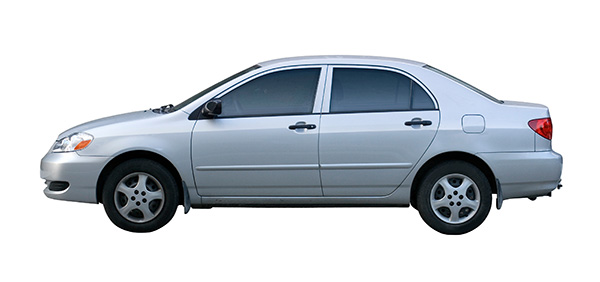
When you're in the market for a pre-owned car, one of the first things you probably look at is the mileage. It's often viewed as a quick indicator of a vehicle's condition or lifespan. But is there really such a thing as “too many miles” on a used car? The answer isn’t always straightforward. While mileage does matter, it’s only one piece of the puzzle. What’s more important is how those miles were accumulated and how the vehicle was maintained over time.
Let’s explore how mileage should factor into your decision-making, what to watch for when shopping for high-mileage cars, and how to determine whether a used vehicle is still a smart buy.
Mileage vs. Maintenance: Which Matters More
It’s easy to assume that lower mileage automatically means a better car, but that’s not always the case. A well-maintained vehicle with 120,000 miles might be in far better shape than a neglected one with only 60,000. Regular oil changes, fluid flushes, tire rotations, and timely repairs can extend the life of any vehicle well beyond 150,000 miles.
In fact, many modern cars are designed to last 200,000 miles or more if properly cared for. This is especially true for vehicles from manufacturers known for reliability, like Toyota, Honda, and Subaru. European and luxury brands can also have long lifespans but may come with higher repair and maintenance costs.
Instead of focusing solely on the number on the odometer, it’s essential to look at the car’s service history. Consistent maintenance records from a reputable shop or dealership are a strong indication that the car has been well-maintained. A clean Carfax or vehicle history report can also help verify past ownership and highlight any potential issues, such as accidents or title changes.
What Is Considered High Mileage Today
Traditionally, a car was considered “high mileage” once it passed 100,000 miles. That threshold is now much higher, thanks to improvements in engineering, materials, and routine vehicle maintenance. Today, a vehicle with 150,000 miles is not uncommon, especially if it’s less than 10 years old and has been maintained regularly.
Of course, some types of vehicles accumulate mileage more gracefully than others. Trucks, for example, are often driven longer and designed for more wear and tear, but they also may have been used for heavy-duty hauling or towing, which can accelerate wear on the transmission and suspension.
As a general rule, if a car has more than 15,000 miles per year on average, it might be worth digging deeper into its service history to ensure those miles were “easy” miles, primarily highway driving rather than stop-and-go city traffic.
Key Components That Wear with Mileage
Even a well-maintained car will eventually require attention to key components as the miles accumulate. Here are a few parts that typically wear out or require replacement after 100,000 miles:
- Timing belt or chain
- Water pump
- Shocks and struts
- Ball joints and suspension bushings
- Engine mounts
- Alternator and starter motor
- Transmission service or rebuild (in some cases)
- Catalytic converter or oxygen sensors
When evaluating a higher-mileage car, it’s helpful to ask whether these items have been replaced recently. If not, factor in the cost of replacement as part of your decision.
The Role of Vehicle Age and Driving Style
In addition to mileage, consider how the car was used. A 5-year-old car with 90,000 miles, which was used for long commutes on the highway, may be in better shape than a 5-year-old vehicle with only 50,000 miles, which was driven in city traffic, where the conditions are harder on engines, brakes, and transmissions.
Age also plays a role in wear and tear. Rubber components like seals, gaskets, hoses, and belts degrade over time, regardless of how many miles the car has been driven. Sun exposure, humidity, and temperature fluctuations can also contribute to deterioration, especially in older vehicles.
Don’t Skip the Pre-Purchase Inspection
No matter how appealing the price or mileage might be, always get a professional pre-purchase inspection before committing to a used vehicle. A certified mechanic can check for hidden damage, worn parts, and signs of poor maintenance. This evaluation gives you an honest picture of the car’s condition and could save you thousands of dollars down the line.
Even if the car has relatively low miles, a comprehensive inspection is worth it for peace of mind. It also provides you with leverage in negotiations if any repairs are needed.
High Mileage Can Mean Great Value—If You Know What to Look For
Buying a used vehicle with higher mileage isn’t automatically a bad decision. In fact, these vehicles can offer excellent value, especially if they’ve been well cared for and priced fairly. You may get more features and a newer model year for your budget compared to a lower-mileage car that’s older or less equipped.
Just be sure you understand what you’re getting into. Budget for future repairs, confirm a strong maintenance history and prioritize models known for long-term durability. A little extra research and preparation go a long way in making a smart used car purchase.
Have Questions About High-Mileage Cars? Visit KLM Auto Center in Marietta, GA
At KLM Auto Center in Marietta, GA, we understand the concerns that come with buying a pre-owned vehicle. Our team can help you inspect a vehicle before purchase, explain what to expect from higher-mileage cars, and perform the maintenance needed to keep your car reliable for years to come.
Stop by today or call to schedule a pre-purchase inspection and get expert advice from the professionals at KLM Auto Center.